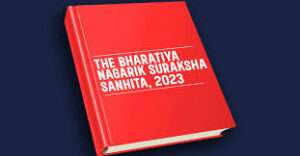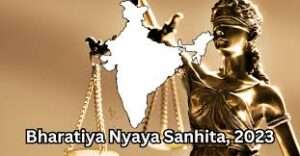
This article has been written by Abdul Basit Kudalkar (graduated from Mumbai University)

Introduction
A couplet of medieval Bhakti poet Rahim’s advice to conserve ‘paani’ — used in the sense of a liquid (i.e. water) as well as honor, because without it a pearl, a human and even food have no value.
Water — is regarded as a basic human need of small households to huge industries. Ancient civilizations and cultures around the world developed around water sources. The importance of water cannot be underestimated. It is vital for sustenance. However, with the passage of time, this inexhaustible resource is in danger. On one hand, water is being exploited due to the greed of a few humans and corporations while some communities are deprived of clean drinking water or access to any water in general. This article tries to briefly discuss this and look into the development of the right to water in the Indian context. It focuses on how this right developed long before it was internationally recognized in 2010. The lack of duty of the legislature and the active role of the judiciary in this regard is analyzed.
Access to Water: Ground Reality
Firstly, we shall briefly discuss how water has been used as a tool of discrimination. We try to understand this with respect to two marginalized groups: Dalits and Adivasis. Since historical times, people of a certain community have been discriminated against by the upper castes. The reasons for this discrimination are not easy to explain nor is the scope of this article, however, it is interesting to note how it was practiced in a number of ways right from food habits to untouchability. But where this discrimination manifested most shockingly was with respect to access to water. Dalits were prohibited from public wells, canals, and tanks used by the upper castes. They had separate reservoirs which would sometimes have low-quality or unfit water. In places where such separation was not possible, there were strict rules for using the common water reservoirs. Dalits were made to stand in separate queues, had access to water for a given time of the day, and were allocated separate utensils to draw water.
This began to change during the colonial rule and post-independence, appropriate legislative action was taken. We can see this in the form of various articles like Article 14, Article 15, or Article 17 of the Constitution which abolishes untouchability. Separate legislation was enacted to criminalize the non-access of public water reservoirs to Dalits. Thus, Dalits got a medium to enjoy their right to water. This does not mean discrimination in other forms does not exist or continue.
Another marginalized group is Adivasis which has faced the brunt of development. Adivasis seek to protect their indigenous identity and culture in which water, land, and forest have a prominent place. The sad reality is, however, that they are displaced from their settlements without proper rehabilitation. In order to ensure drinking water and water for other uses like irrigation and industries, dams and canals are constructed which deprives the Adivasis of their right to water. There is not much development in ensuring their right over water as in the case of the Dalits.
Apart from highlighting the plight of these two marginalized groups, some other facts are also important to be known by us. Villages in arid regions of Maharashtra, Rajasthan, and a few other states face the problem of water shortage. The water is unclean and an invitation to serious diseases. Another point to note is the duty of arranging the water for the household is completely upon the women whether in rural or urban. The shortage of water and poor water quality is not only a rural problem but is also prevalent in metropolitan cities and small towns. Irregular supply of water and water cuts affect the lives of city dwellers. The groundwater level is also declining drying up wells. There is clearly inaction on the part of the State. This is discussed further below.
The Water and The State
During the British Raj, it was important to control the water resources for the purpose of irrigation, drinking, or other uses. Easement right was given over the water to the individual. This made exercising subordinate rights over the water sources in or around the property convenient. Encroachment or trespass was criminalized. We can summarise on the basis of an analysis of various laws passed before independence that water was subject to regulate in the form of water taxes, water supply, irrigation, building artificial reservoirs, etc. This continued post-independence.
The State never saw water as a basic right of humans to live a life of dignity. Though it was empowered to make laws related to water, its primary aim was to control the resource. Water is listed in the Union as well as the State Lists of the Indian Constitution. Both legislatures have the power to make necessary laws related to water supplies, irrigation, drainage, water storage, etc. The state laws on water shall be subject to the union laws on the same.
The regulating powers on water sources and their various usages are not limited to the state or the union alone. At the local level, panchayats and municipal bodies are also empowered to regulate water supply and sanitation by the 73rd and the 74th constitutional amendments. Panchayat and municipal bodies are responsible for providing clean drinking water and sanitation.
There were no legislations to ensure the safety of water sources and accountability. It was only since the late 70s that we saw legislation related to the environment. The Water (Prevention and Control of Pollution) Act 1974 was passed to check water pollution. It mainly deals with misuse of water and the required compliance.
There has been no water policy since independence until 1987 followed by those in 2002 and 2012. The National Water Policy 1987 dealt with having a national policy to solve the water problem, floods, and droughts. It focused on maintaining ecological balance while planning water resource development projects. The 2002 Water Policy was on the lines of the 1987 Policy. The National Water Policy, 2012 stated the need to formulate a country-wide framework that would devise general principles for the exercise of legislative or executive powers by the center, the states, or the local bodies. It further emphasized on prevention of groundwater exploitation. Water pricing guidelines were also introduced.
In 2016, the Centre circulated a draft Bill for a national-level water framework and asked for comments from the states. The provisions of the Bill stress on protecting, regulating, and managing water as a necessary resource. The definition of ‘water for life’ includes various activities where water is essential to carry out any life or related function. The right over water is assured to all without discrimination of any kind. However, the bill has remained in draft form for the past 7-8 years. The enactment of the Bill making it binding upon the State to provide water to all Indians has a long way to go for coming into force.
Right to Water: Judicial Articulation
Although the articulation of water rights by the judiciary as a basic human right predates the Constitution, we focus on the post-Constitution scenario when the Supreme Court was established in 1950 while the High Courts from colonial times continued and new ones were also established. In the post-emergency era, the judiciary interpreted and widened the scope of fundamental rights to rectify its mistakes in the Emergency period. Article 21 which simply states that no person shall be deprived of life except through procedure established by law has been the source of many sub-rights. The Supreme Court tried to widen the scope of the right to life to include the right to water and also define what the right means. The Constitution has been of great help to the apex court on the basis of which the State has been made to realize its duty in this regard.
In Chameli Singh v. the State of UP (1996), the Supreme Court decided thus: Right to life under Article 21 includes the right to food, water, decent environment, education, shelter, etc. These are basic human rights without which any civil and political rights guaranteed by the Constitution or international covenants cannot be exercised.
The apex court maintained the public interest litigation filed in Subhas Kumar Vs. State of Bihar for access to pollution-free water and air which the Court held to be included in the right to life under Article 21.
In cases involving water pollution, the Court derived upon the “right to water” as part of the “right to a healthy environment”, which comes from the “right to life”. The Supreme Court has directed the cleaning up of water sources and also issued mandatory directions to polluters for restoring soil and groundwater post-pollution. Further, the Court emphasized on the Directive Principles for State Policy to make the government and the administration aware of its duties. However, these judgments still do not impose an obligation upon the State. They are mere directions that should be followed.
The decisions of the High Court seem to be a bit progressive and direct in this regard. The Andhra Pradesh and Kerala High Courts placed an affirmative obligation on the state to provide potable drinking water to the population The Andhra Pradesh High Court went a step ahead and set a good example by stating that the municipal water supply board cannot terminate drinking water supply to the owner even if the title over the property was in dispute. Thus, the High Court differentiated the right to water from property ownership.
Hence, the judiciary has played a key role in articulating and ensuring the necessary rights of the citizens related to access to safe, pollution-free water without any discrimination. The Courts came to this conclusion through their judicial mind and interpretation of the Constitution. They realized the intent of the Constitution framers which was to guarantee necessary rights and freedoms to the people of India, irrespective of the social, economic, or political status, gender, religion, place of birth, etc., that are important for living a life of dignity.
Conclusion
The above discussion helps in understanding the nuances of a very common resource about which no one gives a thought generally but is important for survival. We understand that the articulation of water rights has helped to ensure its access and usage by the people. The development of the right to water as a legal and constitutional right happened gradually in India from colonial times until the recent past. The judiciary played an active role in this regard holding the legislature and the executive accountable. This was long before the international concern and efforts of recognizing water as important for human life and thus a right to be secured which happened in 2010.
Despite the good efforts on the part of all three branches of governance: legislature, executive, and judiciary, there needs to be more action and responsibility. The awaited Bill should be enacted, and proper rules, guidelines, and actions be taken by the executive. Lastly, the judiciary should have a check over the actions of the legislature and the executive while upholding the constitutional values and spirit with a liberal mindset.






